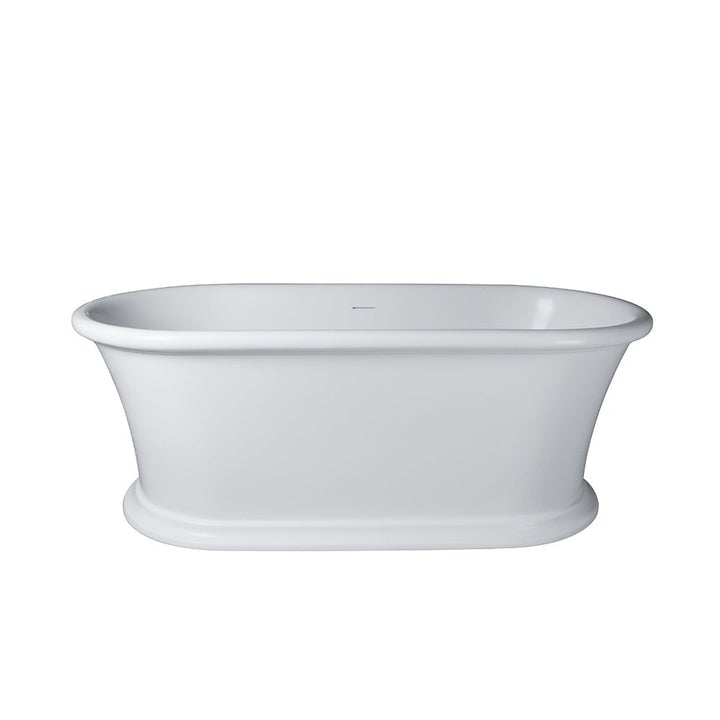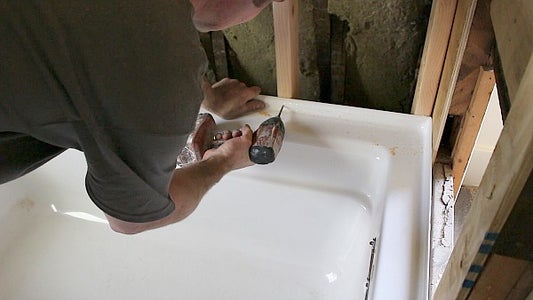How to Install a Tub (Step By Step).
How to Install a Tub (Step By Step).
Blog Article
Each person maintains their personal piece of advice on the subject of How to Install a Bathtub Yourself.

Installing a tub isn't exactly rocket science, yet it does require strong plumbing, woodworking, and often, tiling skills. Replacing an old bath tub with a new one is likewise a reasonably difficult task. If the old tub is conveniently accessible, the job can relocate quickly; if you need to open up a wall to eliminate the old tub as well as position the brand-new bath tub, the task is much harder. In either situation, the job is within a residence handyman's abilities, although you will need a helper to leave the old bathtub and also embeded in the brand-new one. Ensure you have certified on your own for the work and also fit trying it. As opposed to hiring a professional to take over a halfway-completed job, it is much better to consider employing one prior to you start. Opportunities are you might need a professional plumber to make tube connections.
This short article will certainly aid you mount a brand-new bathtub in your bathroom if you have already acquired a brand-new tub and also do not require to alter the plan of your previous water system pipes.
Your tools and material checklist should comprise the following:
Removing Old Taps
If you require to change old faucets with new ones as a part of your installation, after that the first thing you need to do is separate the water system. After doing so, activate the faucets to drain pipes any type of water continuing to be in the system. The process of removing the existing faucets can be rather troublesome because of the restricted access that is often the instance.
Make use of a container wrench (crowsfoot spanner) or a faucet tool to reverse the nut that attaches the supply pipelines to the faucets. Have a fabric prepared for the staying water that will come from the pipes. As soon as the supply pipelines have actually been gotten rid of, make use of the very same tool to loosen the nut that holds the taps onto the bath/basin. You will need to stop the single faucets from transforming throughout this procedure. When the taps have been gotten rid of, the holes in the bath/basin will certainly need to be cleaned up of any old sealing substance.
Prior to going on to fit the new taps, compare the pipe links on the old taps to the brand-new taps. If the old taps are longer than the brand-new taps, after that a shank adapter is required for the new taps to fit.
Fitting New Touches
If the tails of the new taps are plastic, after that you will require a plastic adapter to avoid damages to the string. One end of the connector fits on the plastic tail of the faucet as well as the other end gives a connection to the current supply pipelines.
If you need to fit a monobloc, after that you will call for reducing couplers, which links the 10mm pipe of the monobloc to the common 15mm supply pipe.
Next off, place the tap in the placing opening in the bath/basin guaranteeing that the washing machines remain in place in between the faucet and also the sink. Protect the faucet in place with the manufacturer supplied backnut. Once the faucet is securely in position, the supply pipes can be linked to the tails of the taps. The taps can either be attached by utilizing corrugated copper piping or with typical tap adapters. The previous type needs to be linked to the faucet ends initially, tightening only by hand. The supply pipelines can later be linked to the other end. Tighten both ends with a spanner after both ends have actually been connected.
Mounting the Bathtub
Utilizing both wooden boards under its feet, put the bath tub in the needed setting. The wood boards are useful in uniformly spreading out the weight of the bath tub over the location of the boards instead of concentrating all the weight onto 4 small factors.
The following goal is to guarantee that the bath tub is leveled all round. This can be achieved by inspecting the level and adjusting the feet on the bathtub up until the level reads level.
To set up faucets, fit the bottom of the furthest versatile faucet connector to the suitable supply pipeline by making a compression sign up with; then do the same for the various other tap.
Turn on the water and check all joints as well as brand-new pipework for leakages and also tighten them if necessary. Fill up the tub as well as additionally examine the overflow electrical outlet and the normal outlet for leakages.
Ultimately, deal with the bathroom paneling as described in the producer's instruction manual. Tiling as well as securing around the bath tub should wait till the bathtub has been used a minimum of when as this will certainly resolve it right into its last setting.
Getting ready for the Setup
First of all, the sustaining structure provided with the bathroom should be fitted (if required) according to the manufacturer's instructions. Next, fit the taps or mixer to the bathtub. When fitting the tap block, it is essential to ensure that if the tap includes a plastic washer, it is fitted between the bath and the faucets. On a plastic bath, it is likewise practical to fit a sustaining plate under the faucets device to avoid stress on the tub.
Fit the versatile tap connectors to the bottom of the two taps using 2 nuts and also olives (occasionally provided with the bathtub). Fit the plug-hole outlet by smearing mastic filler round the sink outlet hole, and then pass the electrical outlet with the hole in the bath. Utilize the nut supplied by the manufacturer to fit the plug-hole. Examine the plug-hole outlet for an inlet on the side for the overflow pipe.
Next, fit the end of the adaptable overflow pipeline to the overflow electrical outlet. After that, screw the pipe to the overflow face which need to be fitted inside the bathroom. Make certain you utilize all of the provided washing machines.
Link the trap to the bottom of the waste electrical outlet on the bathtub by winding the string of the waste outlet with silicone mastic or PTFE tape, as well as screw on the trap to the electrical outlet. Connect all-time low of the overflow tube in a similar manner.The bathroom should currently be ready to be suited its last placement.
Tiling Around the Bathtub
In the location where the bathroom satisfies the tile, it is essential to seal the joins with a silicone rubber caulking. This is necessary as the installation can move sufficient to split a rigid seal, creating the water to permeate the wall surface between the bathroom as well as the tiling, leading to issues with dampness and also possible leakages to the ceiling below.
You can pick from a variety of coloured sealants to assimilate your fixtures and installations. They are sold in tubes as well as cartridges, and are capable of securing spaces approximately a width of 3mm (1/8 inch). If you have a bigger gap to fill up, you can load it with twists of drenched newspaper or soft rope. Remember to constantly fill the bath tub with water before securing, to allow for the activity experienced when the tub remains in use. The sealer can crack rather very early if you do not consider this motion prior to securing.
Alternatively, ceramic coving or quadrant tiles can be utilized to border the bathroom or shower tray. Plastic strips of coving, which are easy to use and cut to dimension, are additionally conveniently available on the market. It is a good idea to fit the floor tiles making use of water-resistant or water-proof adhesive as well as cement.
Bathtub Installation
How Important Is A Bathtub To Your Home?
High-quality baths, showers, and other bathroom updates are necessary when considering a smart investment in your home. It’s a room that you go to every day and one that is constantly being used by guests.The bathroom is one of the top trafficked rooms in a home and also one of the most valuable in terms of home resale.
Install Piping Before Tub
You will be using your existing drain and waste vent system, but pipes required include the hot and cold water supply lines and a pipe leading to a shower head. A mixing valve and shower head are also needed. Air chambers may be required.
Position the Tub
Lower the tub into place so that the continuous flange fits against the wall studs and rests on 1’x4' or 2’x4' supports. Anchor the tub to the enclosure with nails or screws inserted through the flanges into the studs.
NOTE: Remember, bathtubs and shower stalls may require support framing. A bathtub filled with water is extremely heavy, so check building codes and framing support before installing the tub.
Assemble Drain Connections
Assemble the bathtub drain connections by connecting the tub overflow with the tub drain above the trap, not beyond it. The trap will have a compression fitting that screws over the arm of the overflow assembly.
Place a Pipe For the Shower Head
First, locate a brass female threaded winged fitting and attach it to a framing support via a screw or a nail. Then run a pipe up the wall for the shower head. Sweat or solder the other side of the brass fitting to the top of the pipe.
Attaching Hot and Cold Water Lines
Attach your water lines for both hot and cold by sweating these directly into the hot and cold ports of the mixing valve. The mixing valve will be how water enters the tub’s system, not by the pipes themselves.
Install the Spout
Extend a piece of 1/2 inch pipe, or whichever length is specified in the manufacturer’s instructions, for the tub spout. Sweat on a male threaded fitting at the end of the pipe or use a brass nipple of the proper length and a 1/2 inch cap.
NOTE: At this point you should have your rough-in plumbing work inspected before proceeding further.
Check For Leaks
Restore the water pressure and check the drain connection and the supply pipes for any sign of leaking.
estore the Bathroom Wall
Replace the wall with moisture-resistant drywall as a base for your wall covering. Seal the joints between the wall and your new tub with silicone caulk as protection against water seepage.
https://www.berkeys.com/2016/12/02/bathtub-installation-dallas/

I recently found that write up on How to Install a Bathtub while doing a lookup on the web. Loved our piece of writing? Please share it. Help another person check it out. Thank-you for going through it.
Schedule Now! Report this page